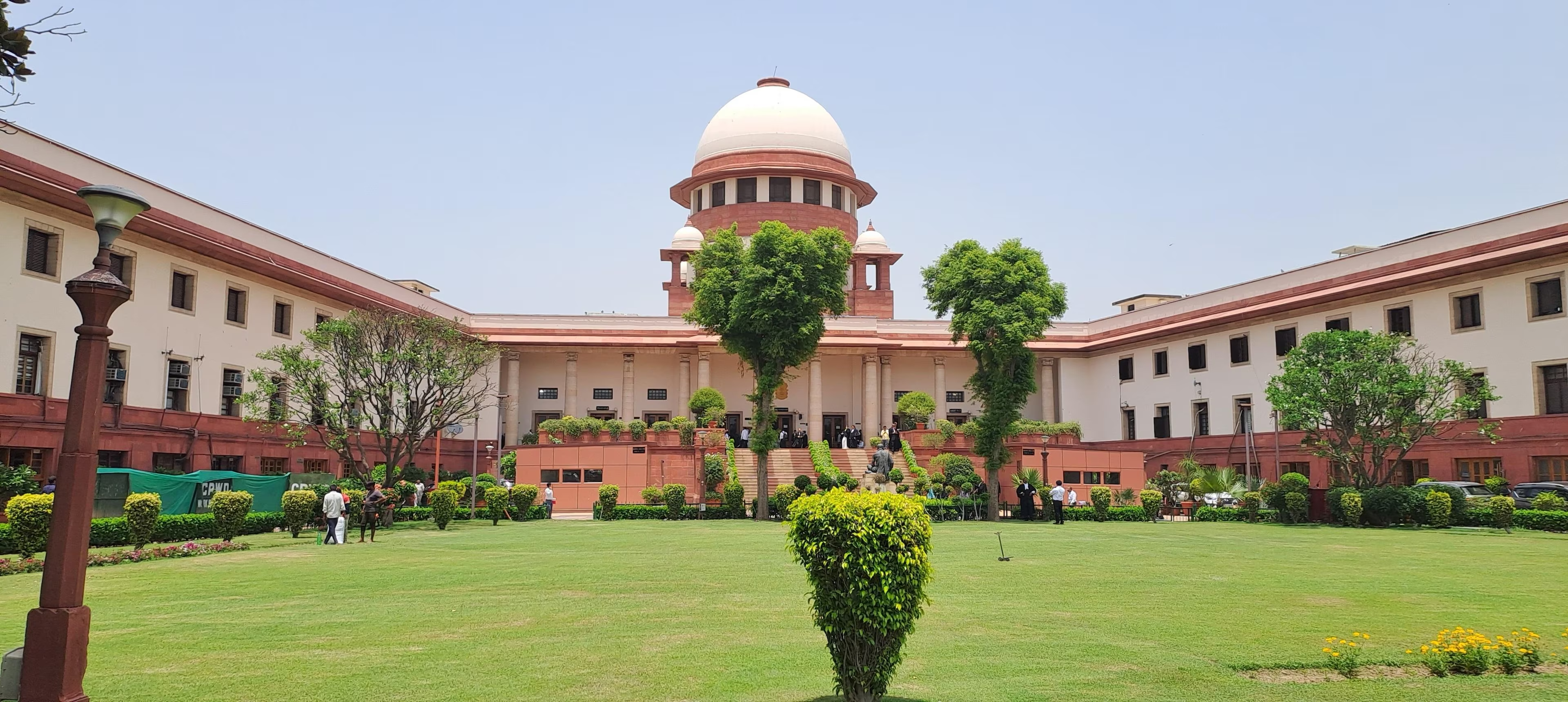- Courses
- GS Full Course 1 Year
- GS Full Course 2 Year
- GS Full Course 3 Year
- GS Full Course Till Selection
- CSAT
- 5 LAYERED ARJUNA Mentorship
- Public Administration Optional
- Online Program
- GS Recorded Course
- NCERT (Recorded 500+ Hours)
- Polity Recorded Course
- Geography Recorded Course
- Economy Recorded Course
- AMAC Recorded Course
- Modern India, Post Independence & World History
- Environment Recoded Course
- Governance Recoded Course
- Science & Tech. Recoded Course
- International Relations and Internal Security Recorded Course
- Disaster Management Module Course
- Ethics Recoded Course
- Essay Recoded Course
- Current Affairs Recoded Course
- ABOUT US
- OUR TOPPERS
- TEST SERIES
- FREE STUDY MATERIAL
- VIDEOS
- CONTACT US
Solar imports could soar to $30 billion annually as India targets 2030
Solar imports could soar to $30 billion annually as India targets 2030
22-10-2024
- In Oct 2024, The Global Trade Research Initiative (GTRI) reports that this ambitious goal could lead to solar equipment imports reaching around $30 billion annually due to significant reliance on Chinese goods.
Key Findings from GTRI Report
- India has set a target of installing 500 GW of renewable energy capacity by 2030.
- Solar power is expected to account for over 80% of this capacity.
- To achieve this target, India needs to increase annual solar installations to 65-70 GW.
- Solar imports could soar to $30 billion annually.
- In the fiscal year 2023-24, India imported solar equipment worth $7 billion, with 62.6% of these imports coming from China.
- India added 15 GW of solar capacity in 2023-24, bringing the total to 90.8 GW by September 2023, a notable increase from 2.8 GW in 2014.
- The Economic Survey 2023-24 indicated that China’s manufacturing trade surplus has been increasing since 2019.
- China dominates global solar manufacturing, controlling 97% of polysilicon production and 80% of solar modules.
- The mismatch between domestic supply and demand in China has prompted Chinese companies to seek additional markets, including India.
- India’s solar manufacturing sector remains in its infancy, with nearly 90% of solar manufacturing involving the assembly of modules from imported cells.
- Only 15% of the value addition in solar products is local.
- In the last fiscal year, India imported $4.4 billion worth of solar modules, inverters, and other key components.
- There is a critical need for investment in the production of solar cells, starting from silica refining, which includes costly and energy-intensive processes.
- Strong research and development efforts, along with significant government support, are needed for domestic production of materials like aluminium frames and glass.
- India has imposed customs duties of 40% on solar modules and 25% on solar cells to reduce dependency on imports.
- Imports from ASEAN countries are exempt from these duties under the India-ASEAN free trade agreement.
Recommendations from GTRI:
- Invest in the production of polysilicon and solar cells using domestic materials.
- Broaden the scope of the Production Linked Incentive (PLI) scheme to support more sectors of the solar supply chain.
- Collaborate with countries such as the US, EU, and Japan to establish large-scale solar manufacturing facilities.
- Create training programs to develop a skilled workforce in the solar manufacturing sector.
- Enhance research and development initiatives for domestic production of key solar components.
Current Status of India’s Solar Sector
- Energy Consumption: India is the 3rd largest energy-consuming country globally and ranks 5th in solar power capacity.
- COP26 Commitment: At COP26, India committed to achieving 500 GW of non-fossil fuel-based energy by 2030 as part of the Panchamrit initiative, the largest renewable energy expansion plan in the world.
- Solar Energy Growth:
- Installed solar capacity has surged 30-fold in the last 9 years, reaching 89.4 GW by August 2024.
- India’s solar potential is estimated at 748 GWp.
- Investment:
- 100% Foreign Direct Investment (FDI) is permitted for renewable energy projects under the automatic route, in line with The Electricity Act 2003.
Significance of Solar Energy Dominance for India:
-
- In sep 2024, REINVEST meet in Gandhinagar attracted USD 386 billion in investment proposals, highlighting the scale of this transition.
- The solar sector is projected to generate 3.26 million jobs by 2050. As of 2021-22, over 29,000 people were already employed in the solar sector.
- The government's Production Linked Incentive (PLI) scheme for solar manufacturing, with an outlay of ₹24,000 crore, aims to significantly boost manufacturing capacity for fully and partially integrated solar PV modules.
- This not only creates jobs but also positions India as a potential global manufacturing hub.
- The Pradhan Mantri Kisan Urja Suraksha evam Utthaan Mahabhiyan (PM-KUSUM) scheme aims to add 30.8 GW of solar capacity by 2026.
- Initiatives like the Solar Charkha Mission are empowering rural artisans. These programs provide clean energy and boost rural economies, showing solar's potential to bridge the urban-rural divide.
- Indian scientists have developed highly stable, low-cost Carbon-based perovskite solar cells with superior thermal and moisture stability.
- The establishment of the National Institute of Solar Energy (NISE) as an autonomous R&D institution underscores this commitment.
- Solar cells and modules have seen price drops of 65% and 50% respectively in 2022, making solar increasingly competitive with conventional power sources.
Major Issues Related to the Solar Sector in India
-
Land Acquisition Challenges:
- Land scarcity is a significant hurdle for large-scale solar projects. Solar power plants occupy at least 5 acres of land per 1 MW output.
- The country’s 500 GW renewable energy target by 2030 could require over 1.5 million acres for solar alone, often conflicting with agricultural needs, leading to social tensions and project delays.
- For instance, the 5,000 MW Dholera Solar Park in Gujarat faced protests from local farmers, delaying its implementation.
- India's complex land ownership laws further complicate land acquisition.
-
Grid Integration and Infrastructure Bottlenecks:
- The intermittent nature of solar power poses challenges for grid stability and management.
- India’s grid infrastructure, designed primarily for conventional power sources, struggles to accommodate solar variability.
- The country’s transmission losses were about 16.4% as of 2021-22, significantly higher than the global average.
- Recent grid failures, like the one in Mumbai in October 2020, highlight the system’s vulnerabilities.
-
Financing and Investment Hurdles:
- Securing consistent financing for solar projects remains challenging despite recent investment proposals.
- Outstanding dues of electricity distribution companies dropped by one-third to ₹93,000 crore by May 2023 following the implementation of the Late Payment Surcharge (LPS) Rules in June 2022, but significant liquidity pressures remain, increasing investor risk perception.
- While green bonds and specialized financial instruments are emerging, scaling up these funding mechanisms to meet the sector's needs is crucial.
-
Technological Dependence and Manufacturing Gaps:
- India’s solar sector heavily relies on imported technology, particularly from China.
- Despite recent policy pushes, including increased import duties and the PLI scheme, domestic manufacturing capacity remains limited.
- The lack of a robust domestic supply chain for critical components like wafers and ingots increases vulnerability to global supply disruptions.
- From July 2020 to November 2021, the polysilicon price in global markets increased from USD 6.8/Kg to USD 43/Kg (about a sixfold increase).
-
Storage and Round-the-Clock Power:
- The lack of cost-effective energy storage solutions hinders solar power's full potential in India.
- Current battery storage capacity is merely 20 MWh, against a projected requirement of 74 gigawatts by 2032.
- The high cost of battery storage makes round-the-clock solar power economically viable for many applications.
-
Environmental and Social Impacts:
- While solar energy is clean, its large-scale deployment can lead to environmental concerns, such as habitat destruction and biodiversity loss.
- The Bhadla Solar Park in Rajasthan, one of the world's largest at 2,245 MW, has raised concerns about its impact on local flora and fauna.
- Additionally, managing end-of-life solar panels is a significant challenge, with India expected to generate 34,600 tonnes of solar panel waste by 2030 but lacking a comprehensive recycling policy.
Steps India Can Take to Enhance the Viability and Efficiency of Solar Energy
-
Streamlined Land Acquisition and Innovative Land Use Policies:
- Implement a centralized land bank system for solar projects, identifying and pre-clearing suitable non-agricultural lands.
- Introduce a national policy on agrivoltaics, incentivizing dual use of land for agriculture and solar generation.
- Simplify land leasing regulations for solar projects, allowing longer lease periods of up to 40 years.
- Encourage the use of brownfield sites, such as closed landfills and abandoned mines, for solar installations.
-
Grid Modernization and Smart Integration Technologies:
- Invest heavily in smart grid technologies and energy management systems to handle solar variability.
- Upgrade transmission infrastructure, focusing on high-capacity interstate transmission lines dedicated to renewable energy.
- Incentivize the deployment of distributed energy resources (DERs) and microgrids to reduce transmission losses and improve grid resilience.
-
Innovative Financing Mechanisms and Risk Mitigation Tools:
- Establish a dedicated Green Bank for renewable energy projects, offering low-interest loans and credit enhancement tools.
- Implement a national payment security mechanism to address the risk of delayed payments from DISCOMs.
-
Domestic Manufacturing through Technology Transfer and R&D:
- Implement a phased manufacturing program for the entire solar value chain, from polysilicon to modules.
- Establish joint ventures with global technology leaders for knowledge transfer and capacity building.
- The recent success of IIT Bombay in developing 4T-silicon-perovskite tandem solar cells with over 26% efficiency demonstrates the potential for indigenous innovation, which could be scaled up with targeted support.
-
Comprehensive Energy Storage Policy and Infrastructure:
- Develop a national energy storage mission with clear targets and incentives for various storage technologies.
- Promote pumped hydro storage in suitable geographical locations as a cost-effective large-scale storage solution.
-
Skill Development and Workforce Training Programs:
- Establish a network of solar skill development centers across the country, focusing on rural areas where large solar projects are typically located.
- Integrate solar technology courses into ITI and polytechnic curricula to create a pipeline of skilled technicians.
- The Suryamitra Skill Development Programme could be expanded to include advanced technologies and soft skills training.
-
Water-Efficient Cleaning Technologies and Practices:
- Mandate the use of robotic dry-cleaning systems for large-scale solar installations in water-stressed areas.
- Invest in research and development of hydrophobic coatings for solar panels to reduce dust accumulation.
- Implement rainwater harvesting systems at solar parks for cleaning purposes.
- Promote the use of treated wastewater for panel cleaning in areas near urban centers.
Accelerating Rooftop Solar Adoption:
- Revamp the rooftop solar ecosystem by implementing a unified, nationwide net metering policy with consistent regulations across states.
- Introduce innovative financing models like solar leasing and on-bill financing to reduce upfront costs for consumers.
- The Pradhanmantri Suryoday Yojana seeks to outfit 10 million households with rooftop solar panels.
- Simplifying the approval and installation process through a single-window clearance system and standardized equipment ratings is necessary.




